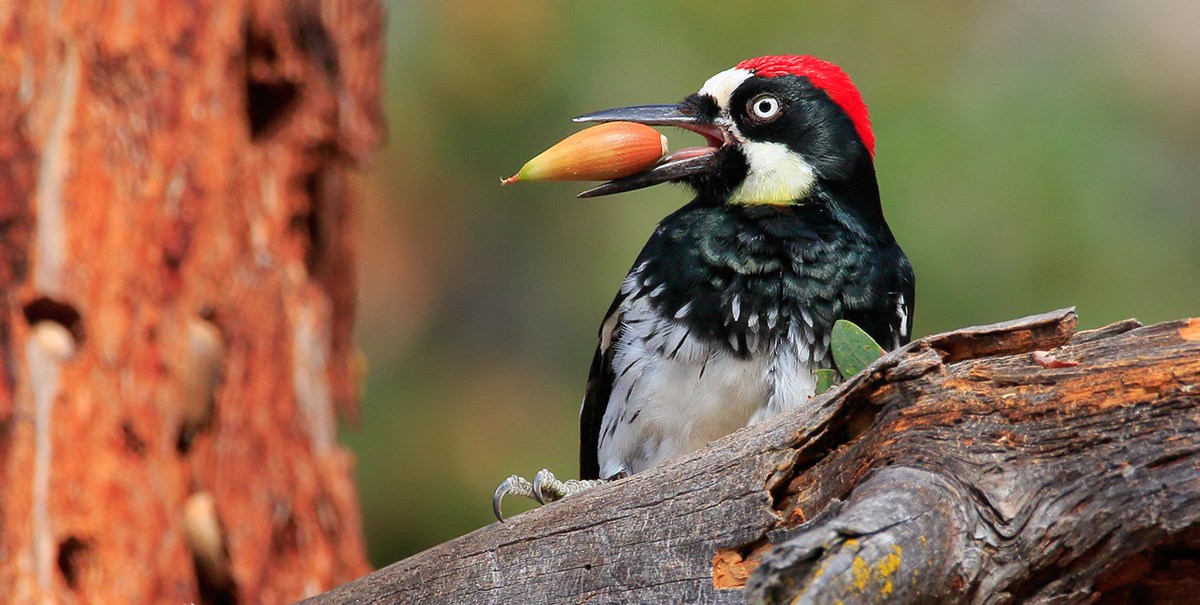Woodpeckers in Florida Populace: Types Overview and Preservation
Woodpeckers in Florida Populace: Types Overview and Preservation
Blog Article
Revealing the Tricks of Woodpeckers: Behavior, Environment, and More
Woodpeckers, with their one-of-a-kind actions and specialized adaptations, have long attracted researchers and nature fanatics alike. By uncovering the enigmas surrounding woodpeckers' actions and environment choices, a much deeper understanding of these bird wonders emerges, offering a look into their remarkable globe.
Woodpecker Behavior Insights
In analyzing woodpecker behavior, a remarkable display screen of specialized skills and adaptations arises, dropping light on their impressive environmental niche - Woodpeckers in Florida. Woodpeckers, recognized for their unique drumming on trees, possess a variety of behavioral traits that add to their survival and success in their atmosphere. One essential behavior is their drumming, which serves numerous functions such as communication, developing area, attracting mates, and locating food resources. This rhythmic pecking also showcases their remarkable strength and endurance, as they can hammer away continually at high speeds without causing injury to themselves.
Additionally, woodpeckers display an unique feeding behavior identified by their capability to remove pests from tree bark using their specialized beaks. Their lengthy, barbed tongues help in catching target, while their strong neck muscular tissues supply stability and accuracy during pecking activities. This feeding technique enables woodpeckers to access surprise insect larvae and extract them with amazing performance.
Environment Preferences and Choice
What elements influence the environment preferences and selection of woodpeckers? One vital element influencing woodpecker habitat selection is the accessibility of suitable nesting sites. Woodpeckers generally favor forests with a mix of fully grown trees that supply adequate chances for cavity excavation.
Additionally, woodpeckers show a choice for environments with a bountiful supply of food resources. They are largely insectivorous, feeding on beetles, ants, larvae, and other pests found in worn out wood or tree bark. Woodpeckers often tend to prefer woody locations with a diverse insect populace to satisfy their dietary demands.
Moreover, the visibility of dead or worn out trees is an additional key factor in woodpecker habitat choice. These trees not only supply food resources yet additionally offer ideal substrate for cavity excavation. Dead trees are vital for the maintenance of healthy and balanced woodpecker populations, as they play an essential duty in the woodpeckers' life process and community dynamics.
Feeding Behaviors and Diet Regimen Make-up
Woodpeckers demonstrate a specialized feeding actions focused on foraging for pests within different environments. In enhancement to bugs, woodpeckers additionally take in tree sap, fruits, nuts, and seeds, adding selection to their diet plan depending on the season and accessibility of food sources.
The foraging techniques of woodpeckers are well-adapted to their arboreal way of living (Woodpeckers in Florida). Their capability to dig More Bonuses deep into timber not only provides them with food but additionally assists in producing nesting cavities and establishing regions. Woodpeckers play an important function in keeping the wellness of forests by regulating insect populaces and assisting in the decay of wood. Comprehending their feeding practices and diet make-up is essential for conservation initiatives intended at maintaining these distinct and beneficial birds.
Drumming Sounds and Communication
Using quick drumming audios on different surface areas, woodpeckers employ a distinctive kind of communication to indicate area limits and draw in companions. This drumming habits is not just a way of communication however likewise serves as a way for woodpeckers to develop their presence within a certain location. The strength, speed, and pattern of the drumming can communicate important info to other woodpeckers around.
Woodpeckers utilize drumming noises to announce their visibility in a region and to advise off prospective burglars. The loud and see post recurring nature of the drumming functions as a clear signal to various other woodpeckers that the area is currently asserted. This assists in decreasing problems and reducing physical conflicts in between people.

Survival Adaptations and Specialized Makeup

Verdict
Finally, woodpeckers display distinct actions, such as drumming noises for interaction, and have specialized anatomy for survival in their picked habitats. Their feeding practices and diet regimen make-up better demonstrate their flexibility to various atmospheres. By understanding these facets of woodpeckers, scientists and guardians can much better shield and protect these remarkable birds and their ecological communities.
Report this page